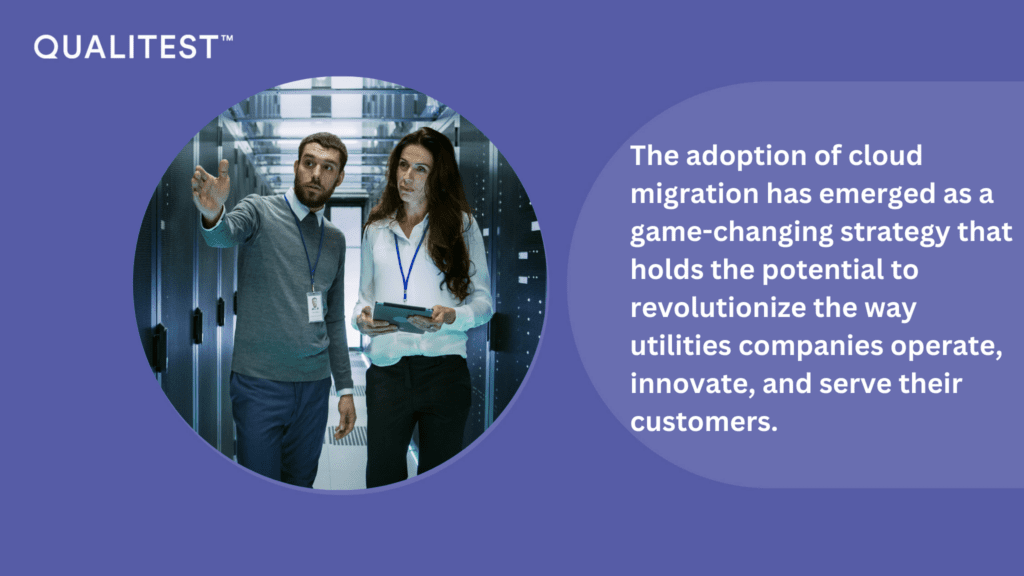Cloud-Powered Utilities: Exploring the Future of the Modern Infrastructure
-
Feb 08, 20246 min read
In the fast-evolving landscape of the utilities industry, the importance of updating legacy systems is crucial. Often characterized by their age, outdated technologies, and limited scalability, legacy systems pose significant challenges to the efficiency, security, safety, and competitiveness of utilities companies.
Legacy systems are notorious for their inefficiencies, often causing bottlenecks and hindrances to smooth operations. By upgrading to modern technologies, utilities companies can streamline processes, optimize resource allocation, and reduce downtime. Newer systems enable real-time data analysis, predictive maintenance, and better asset management, leading to improved reliability and minimized service disruptions.
As the world pivots towards sustainable energy solutions, utilities are increasingly integrating renewable sources like solar and wind into their grids, with water companies installing smart meters and updated water pipelines into their infrastructure. Legacy systems, designed before the renewable energy boom, struggle to manage the variable nature of these sources. Modern systems offer advanced energy management capabilities, allowing utilities to balance supply and demand seamlessly while optimizing renewable energy utilization.
Decisions driven by insights that are derived from data analysis are also pivotal. Legacy systems often lack the ability to process and harness the wealth of data available, hampering informed decision-making. Upgrading to contemporary systems equips utilities with sophisticated analytics tools that enable them to gain valuable insights into consumer behaviour, grid performance, water meter performance and operational efficiency.
Consumers today also demand greater transparency, control, and convenience when it comes to utility services. Modern systems allow utilities to offer interactive customer portals, real-time usage monitoring, and personalized services. By meeting these expectations, utilities can enhance customer satisfaction and loyalty, setting themselves apart in a competitive market.
When it comes to managing water distribution systems, the convergence of technology and infrastructure is ushering in a new era of efficiency, accuracy, and sustainability. The integration of modern software solutions, such as SAP (Systems, Applications, and Products) software and GIS (Geographic Information System) asset mapping software, has proven indispensable in streamlining operations and maximizing resource utilization. It is now imperative to update these systems becomes paramount to fully harness their potential.

Some of the benefits of updating SAP S/4HANA software and GIS asset mapping software include:
Updating SAP S/4HANA software and GIS asset mapping software is not just an upgrade; it’s an investment in efficiency, accuracy, customer satisfaction, and sustainability. As the sector navigates the complexities of the digital age, the decision to update these software systems is essential for achieving a resilient and future-ready water distribution network.
The adoption of cloud migration has emerged as a game-changing strategy that holds the potential to revolutionize the way utilities companies operate, innovate, and serve their customers. By embracing the cloud, these organizations can unlock a myriad of benefits that span efficiency, scalability, flexibility, and customer experience, redefining their role in the modern landscape.
Cloud migration offers utilities companies a pathway to heightened operational efficiency. Traditional on-premises IT infrastructures often come burdened with maintenance complexities, hardware limitations, and scalability challenges. Cloud services eliminate these bottlenecks, enabling utilities to focus their resources on core operations while relying on a service provider to manage infrastructure maintenance and updates. This shift allows for streamlined operations, reduced downtime, and optimal resource allocation.
Security is a huge concern in the utilities industry, where sensitive customer data and critical infrastructure are at stake. In addition, a cyber-attack on any part of the utilities industry has the potential to cripple it completely. Cloud service providers invest heavily in state-of-the-art security measures, often surpassing what individual utilities companies can manage on their own. Furthermore, the cloud’s adherence to stringent compliance standards helps utilities meet regulatory requirements and safeguard sensitive information.
The cloud also serves as a catalyst for innovation in the utilities industry. By unburdening internal IT teams from managing infrastructure, companies can redirect their focus toward developing and deploying innovative solutions. Cloud-native applications, advanced analytics, IoT integration, and AI-driven insights become more accessible, allowing utilities to stay ahead in a rapidly evolving landscape.
In addition, today’s consumers demand convenience, transparency, and personalization in their interactions with utilities. Cloud-based platforms enable utilities to offer self-service portals, real-time usage data, and personalized communication channels. This enhanced customer experience strengthens brand loyalty and fosters a positive relationship between utilities and their customers.
The utilities industry stands at a crossroads where the journey toward a more efficient, sustainable, and customer-centric future hinges on the modernization of legacy systems, and the benefits of upgrading are far-reaching.
Migrating to the cloud represents a monumental opportunity for the utilities industry to navigate the complexities of the digital age. From operational efficiency and scalability to data-driven insights and customer experience enhancement, the benefits are profound. By modernizing legacy systems and looking at cloud migration, utilities companies can position themselves as agile, resilient, and customer-centric entities that are well-equipped to embrace the challenges and opportunities of the modern era.
